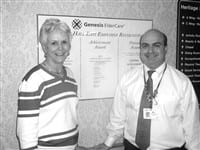The Physician Workforce: One Leg of a Three-Legged Stool
Our 2008 Physician Workforce Study created quite a stir.
It has always generated significant media attention, but at last count the 2008 study — which found ‘critical’ shortages among internal and family medicine physicians for the second consecutive year — was picked up by more than 30 media outlets.
One reason for the intensified public interest is that the shortage of physicians — especially in those two primary care specialties — has been accentuated by the expansion of insurance coverage facilitated by our state’s 2006 health care reform law.
We’re seeing now that addressing coverage alone is not enough, which leads me to the three-legged stool metaphor. The coverage problem is the first leg. The two huge challenges that have arisen since Massachusetts tackled coverage — physician shortages and cost — are the other two legs.
The interconnectedness of coverage, workforce, and cost is nowhere more evident than in the environment I work in — the emergency department — as a recent Boston Globe article pointed out. Increased coverage has enabled hundreds of thousands of ‘new’ patients to enter the system.
Many of them are having trouble finding a primary care physician, and, if they do find one, they confront long wait times for a routine appointment. So, when they get sick, they often go to the emergency department, where costs for nonurgent care are much higher than in an office setting.
The Globe article suggested that part of the solution lies in more intensive patient education and outreach. I agree, but such efforts won’t link people to primary care physicians if those doctors don’t exist.
I commend all stakeholders in the Massachusetts health care reform process for recognizing that there are three legs to the stool. But ideally, future reforms — at the state and national levels — will address coverage, workforce, and cost concurrently, not sequentially.
In Massachusetts, we addressed coverage first and did so boldly and successfully. We’ve opened discussions and made some difficult decisions about cost, but there’s a long way to go. But we’re still at the starting line when it comes to the physician workforce.
The workforce-related elements of Chapter 305 — a new statewide requirement that all acute care hospitals in Massachusetts establish rapid-response teams — will undoubtedly help. Administrative simplification and reimbursement reform may provide short-term improvement. But the impact of other aspects may not be seen for years. Regardless, the Mass. Medical Society stands ready to help ensure prompt and sensible implementation of those provisions.
Dr. Bruce S. Auerbach is president of the Mass. Medical Society and chief of Emergency and Ambulatory Services at Sturdy Memorial Hospital in Attleboro.


Comments are closed.